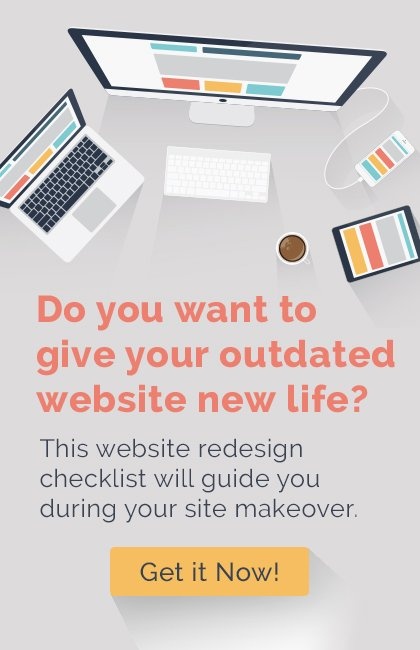
Lessons Learned: Buyer Persona Gone Wrong
Before a company can establish a solid marketing plan, it must be aware of the specific target markets or customer profiles it has the best chance to attract to its product or service. Creating a buyer persona is essential to effective attraction marketing.
In order to perfect your approach in buyer persona launch, these are some common mistakes to avoid:
-
Don’t Forget to Focus on the Buyer Decision
The most common mistake marketers make is solely defining a buyer persona by the buyer profile, rather than putting detailed consideration in what is most useful: the buyer decision.
How to fix this:
Aside from using previous data, we recommend using the research questions provided by 5 Rings of Buying Insight™, which incorporates every aspect you need to know about your buyer persona’s decision making process:
- Priority initiatives – What causes certain buyers to invest in solutions like yours? What is different about buyers who are satisfied with the status quo?
- Success factors – What operational or personal results do your buyers expect to achieve by purchasing this solution?
- Perceived barriers – What concerns cause your buyers to believe that your solution or company is not their best option?
- Buyer’s journey – Who and what impacts your buyers as they evaluate their options and make a selection?
- Decision criteria – Which aspects of competing products, services, solutions, or companies do your buyers perceive as most critical? What do your buyers expect for each?
Ultimate Guide to the Buyer’s Journey- Find out What Each Stage of the Buyer’s Journey Entails
-
Keep Your Research Questions Simple and Sweet
Marketers often stray from insightful target market findings if they use too much detail in their research questions. When conducting research about your buyer persona through surveys or focus groups, avoid questions that are overly personal or technical. This may deviate your campaign away from any productive findings that would help you truly get to know your ideal customer niche.
How to fix this:
When developing questions, it is best to start by establishing what the key problems or questions are that you ultimately want answers for. You may start with a larger, broader list of questions… however, do not make the mistake of forgetting to shave it down. In the end, all questions should lead to answers that are simple, sweet, and directly related to the problem trying to be solved at hand.
-
Assuming About the Buyer Persona Leads Campaigns Astray
It is important to remember that the most helpful information comes directly from the customers. When researching a potential buyer persona, it is crucial to avoid filling in the blanks, skipping the interview, or assuming anything about the client. A campaign could go in the complete wrong direction if this occurs.
How to fix this:
Rather than making an incorrect assumption based on survey results, in-depth conversations with people can provide the answers you need to bring your brand to the next level. Additionally, a small sample size may lead to incorrect assumptions. Since quality > quantity, and many agencies fixate too much into demographic or other obvious information rather than actually helpful insights, in-depth interviews are again a solution to avoiding this mistake. In order to avoid an over-reliance on anecdotes, always ensure they are backed up by data. You know what they say about assuming… it definitely does not make an accurate buyer persona!
-
Less is More: Master One Buyer Persona First!
It is important to focus on mastering one target market rather than taking on too many to handle. Trying to tackle too many buyer personas at once can overwhelm. This results in a lower quality of target profile insights and vague understanding of individual buyer personas. Before deciding to take on another buyer persona, it is important to know that this new initiative will bring about sufficient revenue and that your company has the resources necessary to execute.
How to fix this:
Instead of pondering how many buyer personas to generate, it is important to first focus on establishing how many ways your company needs to market its product or service as the solution for a given buyer persona. Once these are established, it is much easier to gauge if another buyer persona should emerge.
-
One Stock Photo Cannot Fit All
Though stock photos incorporate a creative, personable, and emotion-driven touch to a targeted campaign. However, marketers often forget that one stock photo cannot fit all customers within a buyer persona. Do not make the common mistake of overthinking a stock photo to the point it (mis)leads your campaign into the (wrong) direction.
How to fix this:
In order to solidify your campaign, be sure to start the buyer persona creation process with fleshed out, concrete ideas about who exactly your target market is. Only then should you allow yourself to do the fun part of depicting this persona; stock photos should embellish your envisioned buyer persona- not create it.
More on Buyer Personas:
- Why Are Buyer Personas So Important?
- How to Create a Buyer Persona Template for the Homebuilder Market
- Using Buyer Personas for Senior Living Marketing












 At first glance, it might be difficult to see any benefits of targeting micro-influencers instead of macro-influencers. After all, why would you want to target an influencer who seemingly has much less influence? The following are some of the reasons why micro-influencer marketing can actually be incredibly effective:
At first glance, it might be difficult to see any benefits of targeting micro-influencers instead of macro-influencers. After all, why would you want to target an influencer who seemingly has much less influence? The following are some of the reasons why micro-influencer marketing can actually be incredibly effective:
















